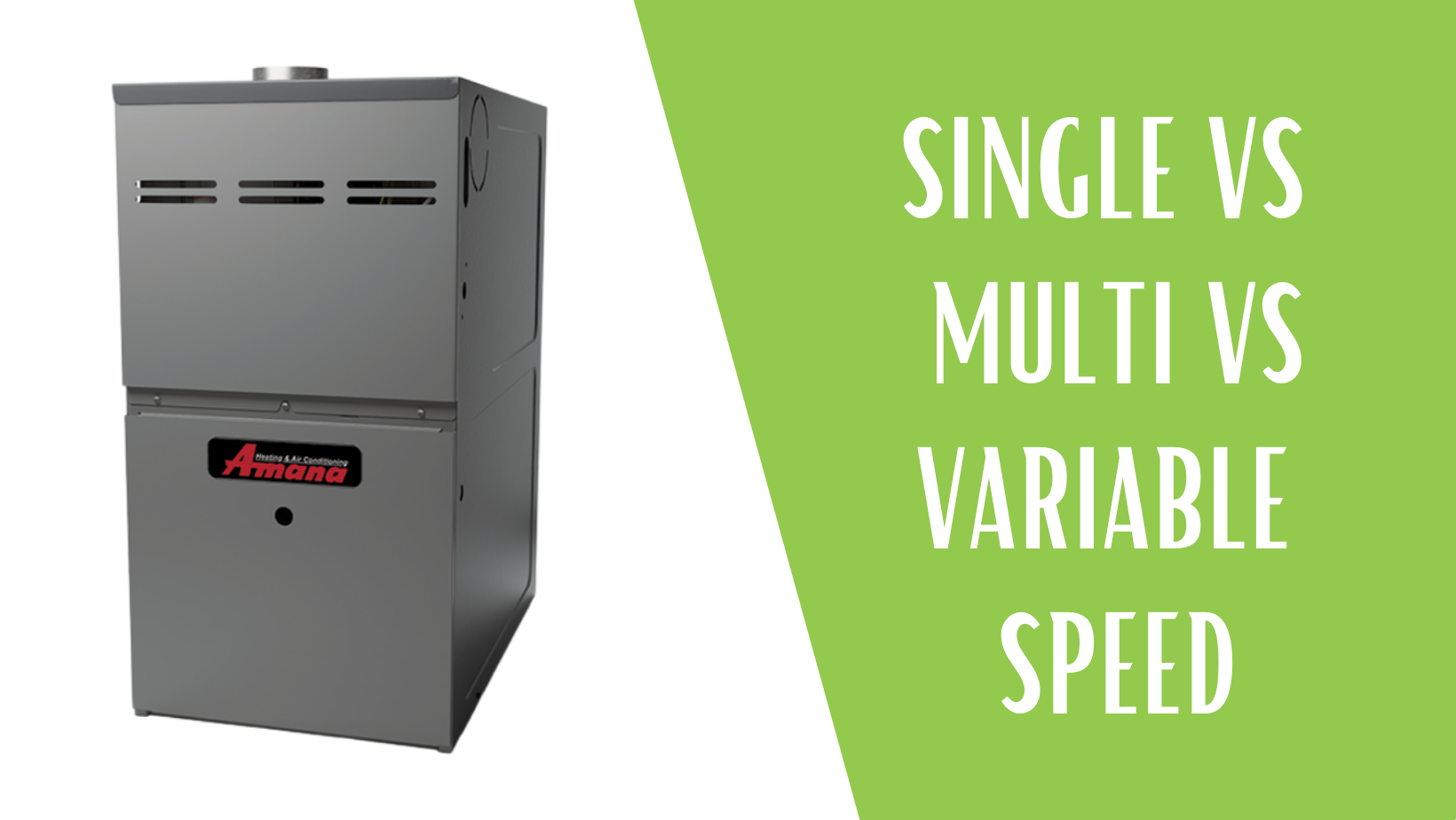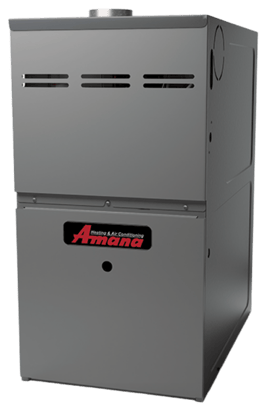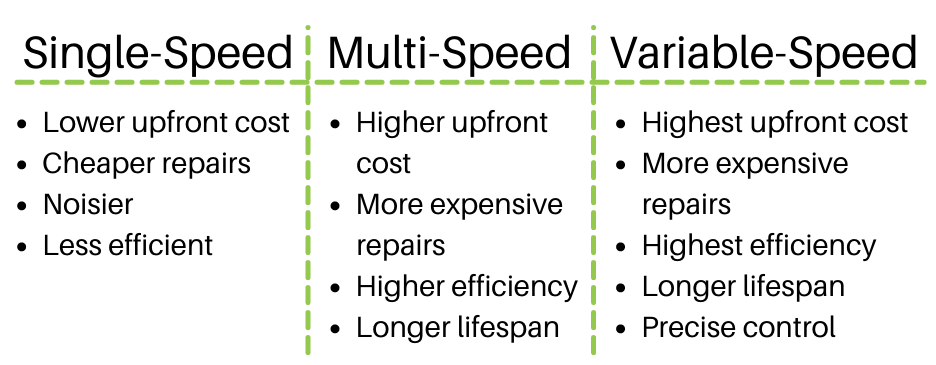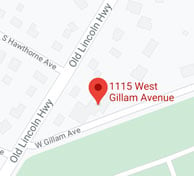When choosing the right gas furnace for your home heating needs, you'll want to consider a few different aspects. Once you've understood how a gas furnace works, you will know that one important component is the blower motor, which pushes the heated air through the vents and around your home.
 Just like how your gas burner can be characterized as single-stage, two-stage, or modulating, your blower motor can be single-speed, multi-speed, or variable-speed.
Just like how your gas burner can be characterized as single-stage, two-stage, or modulating, your blower motor can be single-speed, multi-speed, or variable-speed.Older systems are typically single-speed, meaning that they run at the same heat capacity at all times, while newer systems run at multi- and variable speeds. All three types have their pros and cons, and the best option for your home will depend on your heating needs, the size of your home, your budget, and other factors.
Continue reading to learn the differences between single-speed, multi-speed, and variable-speed gas furnaces, as well as the benefits and drawbacks. To find out exactly what type of gas furnace is suitable for your home, schedule an estimate with your local contractor.
Single-Speed Gas Furnace
This type of gas furnace only has two settings: ON and OFF. It simply turns on when needed and turns off once your home is warm enough. For the entire time that the gas furnace is on, the blower operates in a single (or fixed) speed to circulate air across your home.
These fixed-speed blower motors are often found in single-stage gas furnaces, making them otherwise known as single-speed gas furnaces.
Pros of a single-speed blower
Most traditional furnaces are single-speed meaning many HVAC technicians are familiar with them and easily able to perform repairs on them. They also tend to be easier to set up, making for simpler installations. Because this is the most basic blower type, single-speed furnaces start at a lower price point than multi-speed and variable-speed models.
Cons of a single-speed blower
While single-speed gas furnaces are less expensive, they do come with a few drawbacks. Regardless of the heating requirements of your home, the blower operates at the same fixed speed until it shuts off. So since they can only run at full capacity, they are much less efficient and may end up costing more in the long run. Due to the lower efficiency, single-speed furnaces also have a shorter lifespan -- about 15 years.
Finally, the simplicity of the design can lead to a noisy furnace. Each time it turns on, you are likely to hear a lot of noise as it starts operating at full capacity.
Multi-Speed Gas Furnace
Multi-speed  blowers offer a series of set operating speeds, from a lower rate of air being pushed into the ductwork to a higher rate. This type of furnace may alternate between two speeds -- using 50% and 100% of the system’s power -- or between three speeds -- 40%, 65%, and 100%.
blowers offer a series of set operating speeds, from a lower rate of air being pushed into the ductwork to a higher rate. This type of furnace may alternate between two speeds -- using 50% and 100% of the system’s power -- or between three speeds -- 40%, 65%, and 100%.
 blowers offer a series of set operating speeds, from a lower rate of air being pushed into the ductwork to a higher rate. This type of furnace may alternate between two speeds -- using 50% and 100% of the system’s power -- or between three speeds -- 40%, 65%, and 100%.
blowers offer a series of set operating speeds, from a lower rate of air being pushed into the ductwork to a higher rate. This type of furnace may alternate between two speeds -- using 50% and 100% of the system’s power -- or between three speeds -- 40%, 65%, and 100%.Pros of a multi-speed blower
The additional speed settings allow for better control of the heat in your home and a smoother transition between the settings. Because your home requires subtle temperature adjustments throughout the winter, multiple speeds mean that the motor can operate at a lower setting for longer periods of time. This maintains the temperature more carefully and allows for better air circulation. With more precise temperature control, you can increase efficiency and save money over time. The furnace will also last longer.
Plus, although the furnace may sound loud when it kicks on, it will quickly change to a lower, quieter setting. This is unlike single-speed furnaces which will keep running loudly at full capacity.
Cons of a multi-speed blower
More complex speed settings equate to more complicated circuitry for the gas furnace. This means that should something go wrong with your heater, the repairs will likely be more expensive. The upfront installation cost will also be more expensive.
Variable-Speed Furnace
A variable-speed blower motor is a more advanced version of the multi-speed blower. It operates at all different speeds to precisely control the amount of airflow throughout your home. In other words, this type of furnace only operates at the required speed rather than at predetermined settings, allowing for better temperature control.
Pros of a variable-speed blower
Because these blowers have more accurate airflow and temperature control, they are much more efficient -- requiring about six times less energy than single-speed furnaces. In fact. according to the Department of Energy, a variable-speed motor running continuously at a half speed uses about 25% of the power to move the same amount of air as a single-speed blower.
These variable-speed gas furnaces can adjust so that they only run at high capacity during the coldest parts of the winter. They can also work to remove excess humidity from the air in milder temperatures. Variable-speed blower motors also help your furnace have a longer lifespan, typically 15 to 20 years. Finally, these systems turn on slowly, transition more smoothly, and run at lower settings, making them the quietest out of the three.
Cons of a variable-speed blower
Like furnaces with multi-speed blower motors, ones with variable speeds are more complex and therefore would require more expensive repairs. This version is also the most expensive upfront. However, the increased energy efficiency would save you money in the long run.
How Do I Choose?
 After understanding the main differences, pros, and cons of these types of gas furnaces, it's still best to consult with your local HVAC contractor. You will need to take all of these factors into consideration with your budget, your heating needs, the type/age of your home, etc. If you are solely focused on budget, you will obviously want to go with a single-speed furnace. If you are interested in efficiency and will be in your home for years to come, multi-speed or variable-speed might be right for you.
After understanding the main differences, pros, and cons of these types of gas furnaces, it's still best to consult with your local HVAC contractor. You will need to take all of these factors into consideration with your budget, your heating needs, the type/age of your home, etc. If you are solely focused on budget, you will obviously want to go with a single-speed furnace. If you are interested in efficiency and will be in your home for years to come, multi-speed or variable-speed might be right for you.If you live in the Delaware Valley/Greater Philadelphia area and would like to find comfort within your home, visit our website or give us a call at 215 - 245 - 3200 to learn more.





